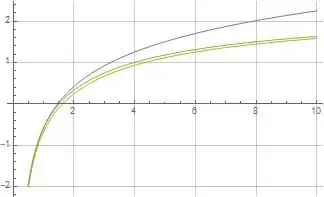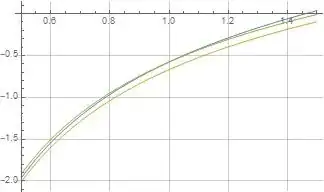The following two formulas for the digamma function $\psi(z)$ both converge very rapidly as $z\to 1$, but formula (2) seems to converge slightly faster than formula (1), and also note formula (2) evaluates exactly correct at $z=1$ for all values of $K$.
$$\psi(z)=\underset{K\to\infty}{\text{lim}}\left(z \sum\limits_{k=1}^K \frac{1}{k (k+z)}-\frac{1}{z}-\gamma\right)\tag{1}$$
$$\psi(z)=\underset{K\to\infty}{\text{lim}}\left(\sum\limits_{k=1}^K\left(\frac{1}{k}-\frac{1}{k+z-1}\right)-\gamma\right)\tag{2}$$
The following figure illustrates formulas (1) and (2) for $\psi(z)$ in orange and green overlaid on the blue reference function $\psi(z)$ where both formulas are evaluated at $K=10$. As mentioned above, formula (2) illustrated in green seems to converge more rapidly than formula (1) illustrated in orange, and formula (2) also evaluates exactly correct at $x=1$ for all values of $K$.


Figure (1): Illustrations of formulas (1) and (2) for $\psi(z)$ evaluated at $K=10$ in orange and green overlaid on blue reference function
Formulas (1) and (2) above are from the Wolfram functions site.
There's also the following limit representation of the digamma function expressed in terms of the gamma function.
$$\psi(z)=\underset{s\to 0}{\text{lim}}\ \Gamma(s)\ \left(1-\frac{\Gamma (z-s)}{\Gamma (z)}\right)\tag{3}$$
For $\Re(z)>0$, the digamma function may also be expressed in terms of the Hypergeometric PFQ function.
$$\psi(z)=(z-1)\, _3F_2(1,1,2-z;2,2;1)-\gamma,\quad\Re(z)>0\tag{4}$$

